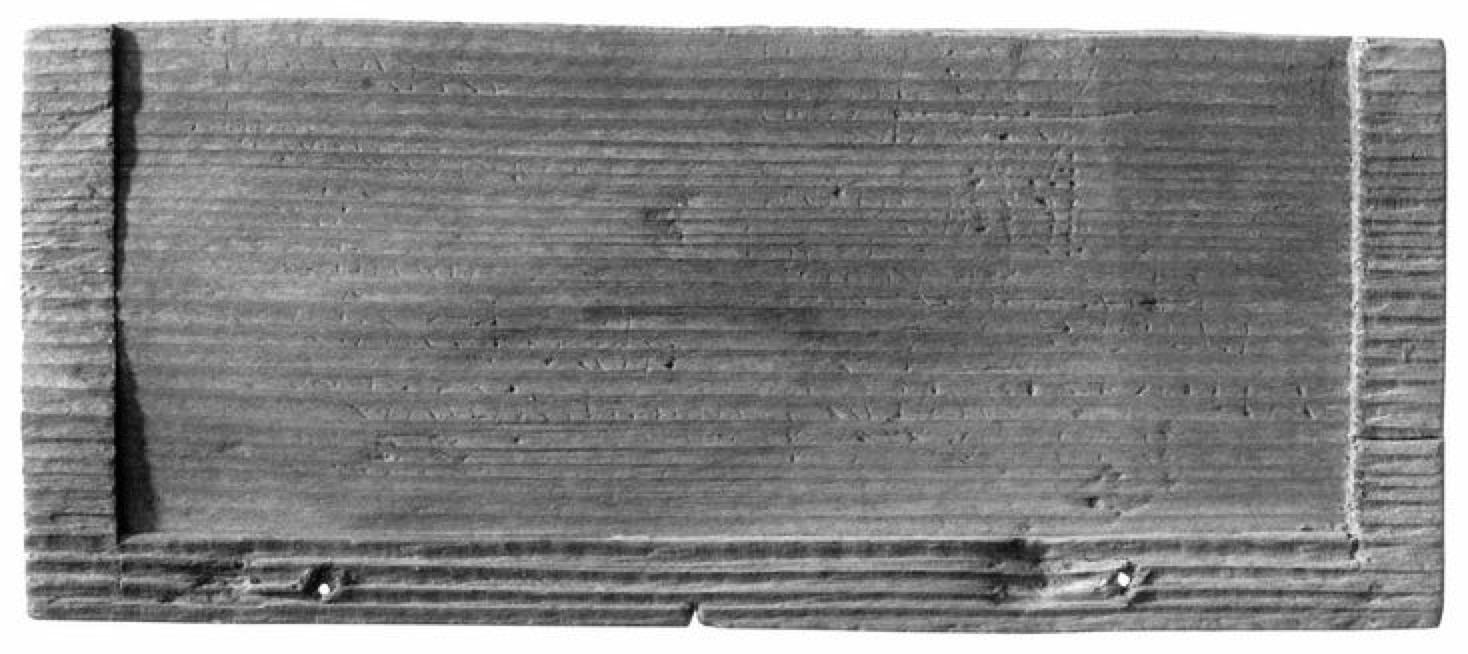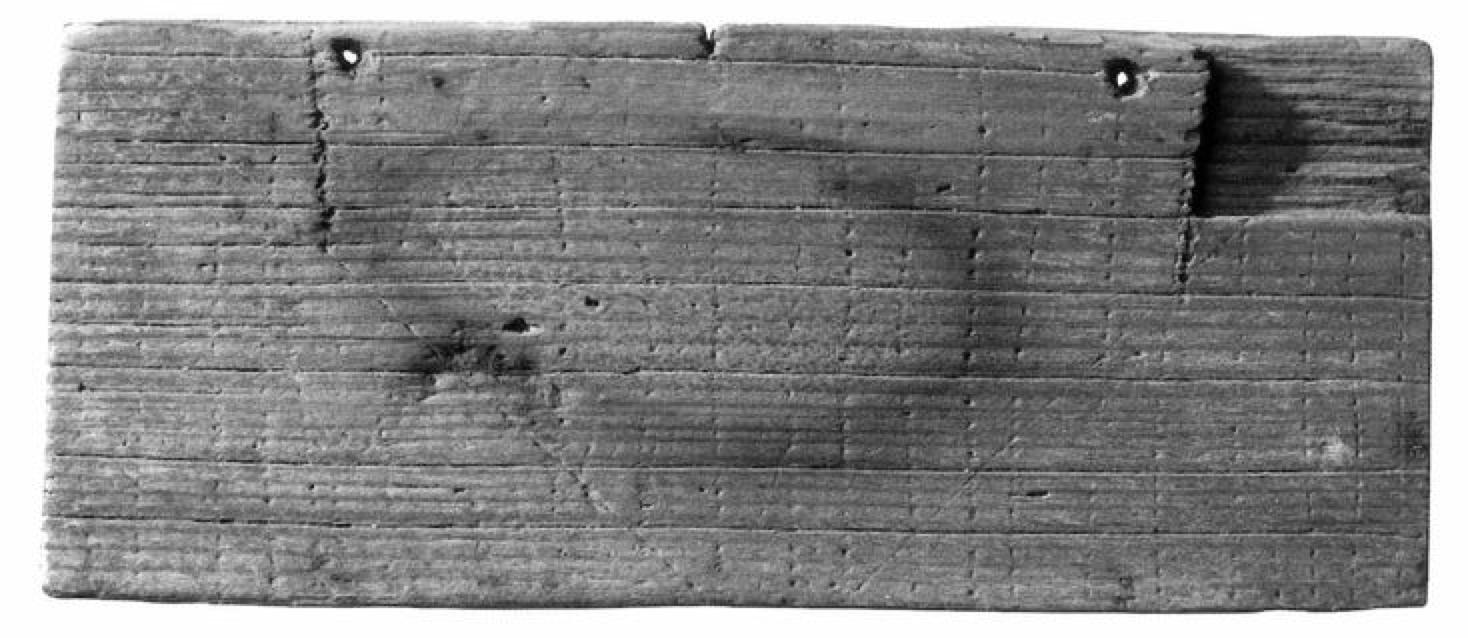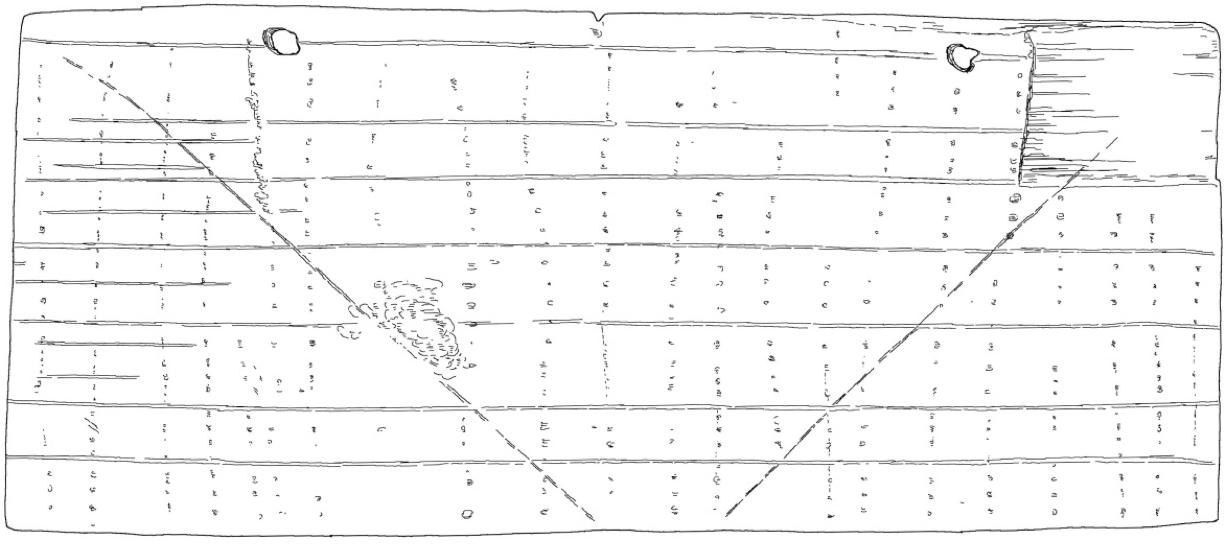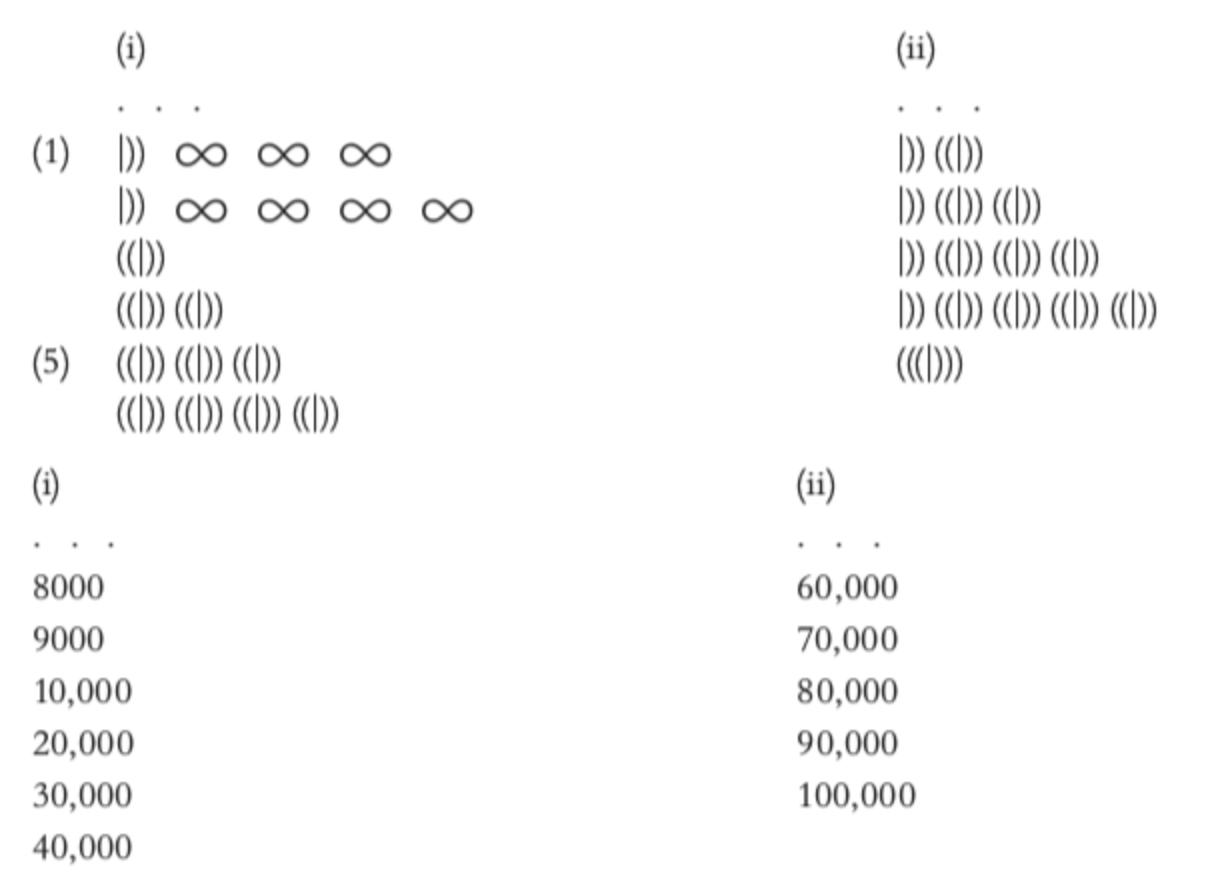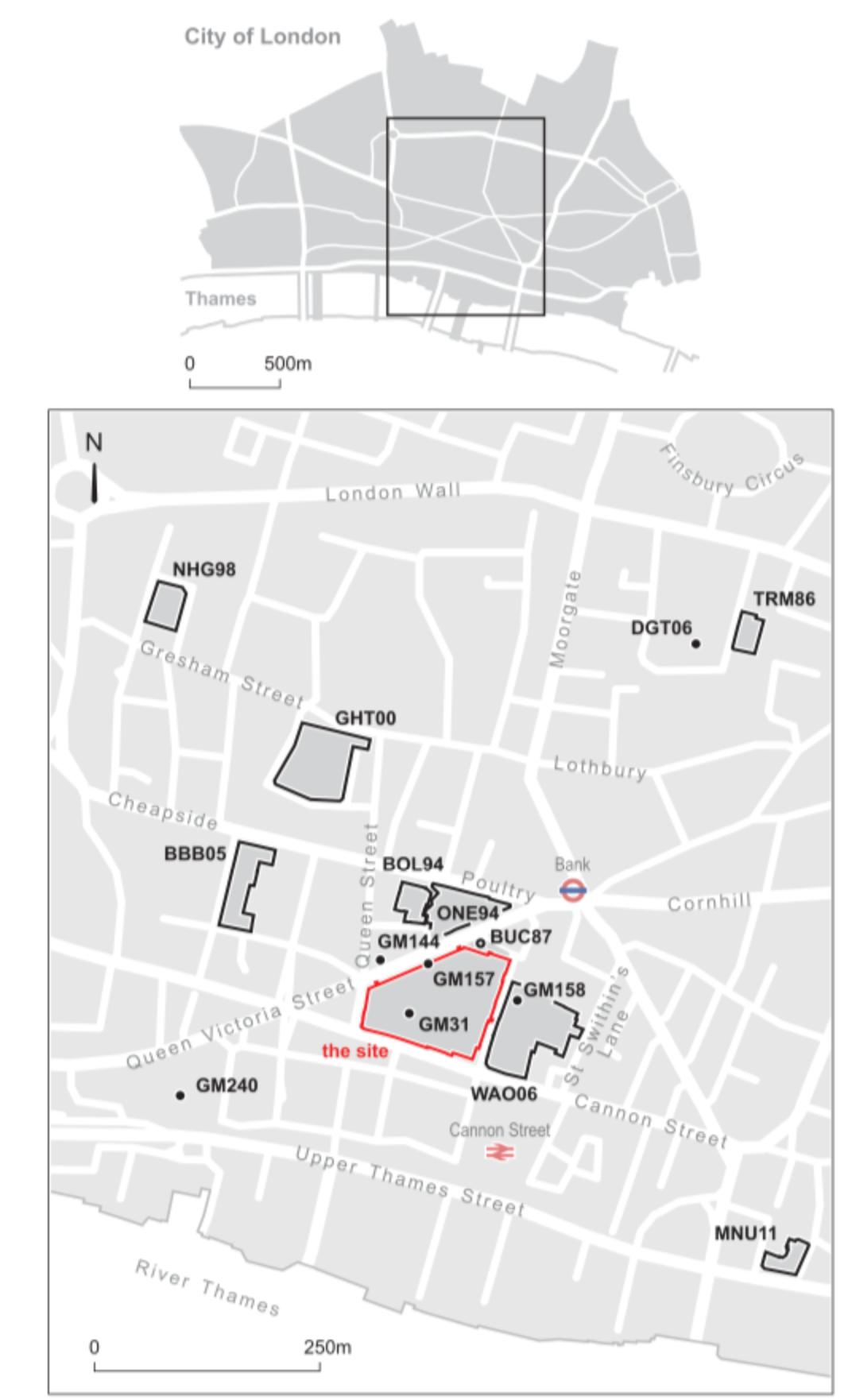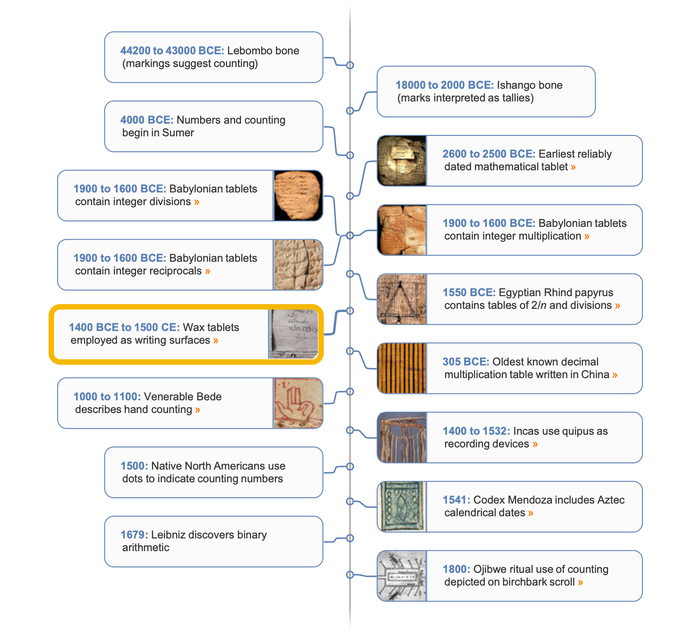around 70 CE
Roman Stylus Tablet
Sequential Roman numerals on a wax tablet
Wax tablets were wooden (or occasionally ivory) boards covered with a layer of wax. They were widely employed as portable and erasable writing surfaces in antiquity and the Middle Ages. Writing was done by etching grooves in the wax using a stylus, and erasure using the other end of the stylus, which often contained a putty-knife-like surface for smoothing the wax. Since wax tablets were used for recording everyday activities such as tracking business accounts, doing simple computations, and recording notes and students' exercises, no special care was taken to preserve them. As a result, surviving examples typically originate from sources such as dump deposits.

This wax stylus writing tablet made of silver fir was found between 2010–2014 during the excavations of the Bloomberg London site in Walbrook, London. The three fragments are unique in being inscribed with nothing but numerical symbols. The tablet originated from the top layer of two dump deposits. The text seems to be a writing exercise for numerical symbols, possibly by a trainee clerk, bookkeeper or schoolboy.
